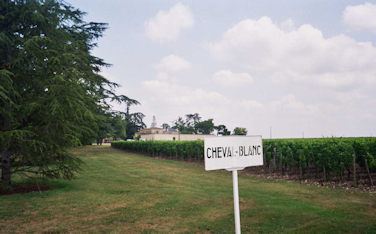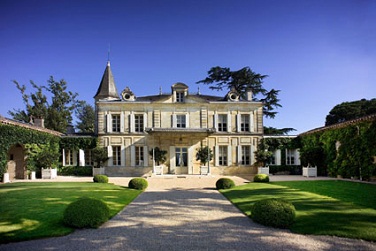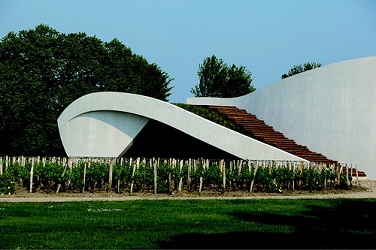Château Cheval Blanc
Château Cheval Blanc sits at the pinnacle of the St Emilion meritocracy, unarguably alongside Château Ausone and arguably alongside Château Angélus and Château Pavie, the two estates elevated to Premier Grand Cru Classé (A) status in 2012. But, whilst the other three are clustered around the village of St Emilion, Cheval Blanc is far to the north-west and possibly only a St Emilion by accident of human geography. This is not classic St Emilion limestone and clay territory, Château Cheval Blanc (and neighbouring Figeac) sits on the gravel band that benefits its northerly neighbours across the road and across the border in Pomerol, namely Château Conseillante and Château l’Evangile. Next door Château Figeac was once a mighty estate of some 200ha, but by the early 19th Century the extravagances of the Comtesse de Carle-Trajet had taken their toll and large portions of the estate had to be sold off. Jean-Jacques Ducasse bought a plot of Figeac in 1832, and then a little bit more; his son-in-law, Jean Laussac-Fourcaud bought some more; and by 1871 Château Cheval Blanc had been carved out of the Figeac estate. Initially the wine was still sold as Château Figeac but from 1852 the name Château Cheval Blanc was used. The Laussac-Fourcaud family, morphing into the Fourcaud-Laussac family, owned Cheval Blanc until 1998. With the first classification of St Emilion’s vineyards in 1954, Cheval Blanc and Château Ausone were given special status as Premier Grand Cru Classé (A). New owners in 1998 brought Pierre Lurton in to manage Château Cheval Blanc, something he does alongside managing Château Yquem. A new space-age looking winery was completed in 2011. The 39ha of vineyards are planted to 58% Cabernet Franc and 42% Merlot, with an average age of 40 years. They were augmented by a 1.4ha block added from Château Tour du Pin in 2012. Another block of vines from Tour du Pin appear to be destined for white wine production.



